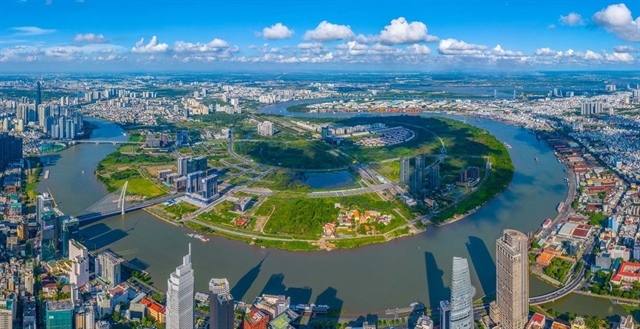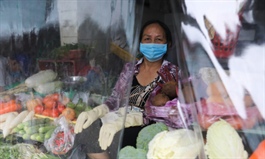WB lowers forecast for Viet Nam’s 2021 GDP growth to 2-2.5%
WB lowers forecast for Viet Nam’s 2021 GDP growth to 2-2.5%
World Bank continued to lower Viet Nam’s GDP growth forecast for this year to 2-2.5 per cent in its October 2021 Viet Nam Macro Monitoring.

Viet Nam's GDP in the third quarter of 2021 decreased by 6.17 per cent from the same period last year, the sharpest decline since Viet Nam announced its quarterly GDP in 2006.
Given the sharp contraction of the GDP in the third quarter and depending on the strength of the economic rebound in the fourth quarter, GDP growth for 2021 is projected to be in the 2-2.5 per cent range, well below its August forecast of 4.8 per cent, it said.
Labour market conditions worsened substantially, reflecting the adverse economic impacts of the lengthy lockdown in major economic centres.
As the number of new COVID-19 infections started to fall, Ha Noi and several provinces eased stringent restrictions so that mobility, industrial production index and retail sales started to recover although they remained lower than a year ago.
The merchandise trade balance improved as import growth slowed while foreign direct investment (FDI) commitment grew for a third month, suggesting foreign investors remain confident in the longer-term potential of the economy.
Inflation remained subdued amid weak domestic demand while the Vietnamese dong experienced further nominal appreciation in the domestic official market. Credit growth decelerated due to weakening credit demand associated with slower economic activities but was comparable to pre-pandemic rates as banks continued to provide preferential loans and forbearance to support businesses affected by the pandemic, according to the WB.
The year-on-year budget balance remained in surplus over the past nine months despite posting another monthly deficit in September, mainly driven by a sharp fall in revenues. The resumption of economic activities after prolonged social distancing is facing obstacles as can be seen from the experiences of other countries. Reactivating manufacturing factories and businesses in the services sector will face potential product and labour shortages, it said.
To ease logistical constraints, the WB recommended that the Government of Viet Nam continue testing and vaccination on a large scale and encouraging labour mobility should be prioritised.
The authorities should also adopt a more expansionary fiscal policy and use the various fiscal tools available to support the economic rebound, including easing procedural rigidities in the budget to spend the planned current budget, accelerating the implementation of planned public investment, and expanding social protection to households and to formal and informal workers, it said.
























